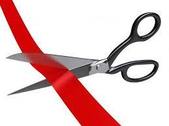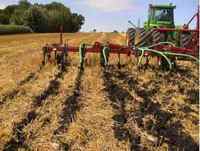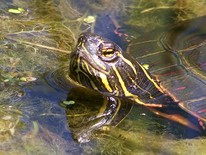|
The 3rd Annual Healthy Lakes Conference is June 8th, on Lake Nagawicka at the Seven Seas Restaurant
Join the Oconomowoc Watershed Protection Program, Tall Pines Conservancy, numerous sponsors and lake organizations, and the Clean Water Association for their 3rd Annual Healthy Lakes Conference at the Seven Seas Restaurant on Lake Nagawicka.
This is a wonderful opportunity for Lake Country folks to network, meet other lake groups, interact with agency personnel, learn more about lake health, find opportunities to volunteer and support your local lakes, and get out on the lake and enjoy beautiful Lake Nagawicka.
Agenda
- Keynote: Dr. Stephen Carpenter - "The
Threats to our Lakes"
- Resident Concerns Survey
- Expert Panel Discussion: What Can Be Done?
- Lunch
- Forming and Sustaining a Lake Organization
- Outdoor Education, Pontoon Rides
- Social Hour
Registration
Friday June 8, Seven
Seas Restaurant, 1807
Nagawicka Rd, Hartland, WI 53029

Your WI Dept of Natural Resources is happy to announce the new water quality
conservation general permit, which dramatically streamlines the regulatory process, is now available! This general permit includes several
agricultural water quality conservation activities including: grassed
waterways, filter strips, lined waterways, grade stabilization structures,
stream crossings, water and sediment control basins, dams, sediment basins, and
constructed wetlands.
We hope this new tool will also help support innovative programs within the
Water Quality Bureau including water quality trading, adaptive management and
TMDL implementation. This general permit is only available to government
agencies including land conservation departments, NRCS, and other similar
agencies and we are planning targeted outreach to inform these key
stakeholders.
|

DATCP will begin taking PLWP grant applications in July for 2019 funding and will again award up to $750,000. Application materials will be available on the program webpage. A PLWP grant program impact report is being developed and should be available by mid-June.
The May news update features a recap of the Annual Producer-Led Workshop, a summary of the Buffalo-Trempeleau Farmer Network winter event and the 2018 producer-led grant awardees with project decriptions. Read it now.
Gabe Brown of Brown’s Ranch in Bismarck, N.D., will lead No-Till Farmer's next free webinar, "Capturing the Full Value of Cover Crops, Perennial Pastures.” Brown will examine how you can get the full value of cover crops through grazing and expanding your cash crop rotation. Register here.
This free webinar is next Wednesday, June 6, at 10 a.m. CST. If you can't attend the live webinar, you can still sign up and we'll send you an email with instructions on how to view the replay, which you can access at any time.
After an admittedly epic development cycle, the SnapPlus team is proud to present version 17.0 of Wisconsin’s Nutrient Management Program, which you can download here.
Version 17 has almost 400 fixes and 150-plus improvements, large and small. See “What’s New in 17” for the whole scoop. As always, we provide a fully functional “beta” version of the software that can be installed and run alongside earlier versions.
The SnapPlus Team thanks you for your patience, and for the help they’ve gotten from so many users.
The Department of Agriculture, Trade and Consumer Protection and the Department of Natural Resources submit an annual report to the Wisconsin Land and Water Conservation Board. The report, required under Wisconsin statute, summarizes and evaluates progress in the land and water conservation programs that the two agencies fund or administer. The 2017 report has been published and is now available here.
|

As the weather warms up, Clean Lakes Alliances is looking for volunteers to help keep local lakeshores healthy! They have "Renew the Blue" volunteer days available Thursdays, (June 7, Aug. 2, 16, 23, 30, Sept. 20 and 27). These events are open to businesses and organizations who want to learn more about our lakes and help maintain our lakeshore parks and beaches. Visit Clean Lakes Alliance to learn more and sign up today!
In this issue of their newsletter;
- Learn more about Clean Boats, Clean Waters Training
- Meet the new summer AIS Team
- Citizen Lake Monitoring aquatic plant ID training
- Updating AIS strategies, and
- Upcoming Events
|

Introducing Paddle for a Purpose: visit Clean Lakes Alliance to learn more about these Monday night paddles from 4-8 p.m.. Twenty percent of your rental fee will support Clean Lakes Alliance. No advance reservations are needed!
This new program will start on June 4th, 2018 through the end of the Madison Boats season. All proceeds benefit work to protect and improve water quality in Madison lakes.
|

On June 1, 2016, DNR’s Wetland Screening and Delineation Procedures guidance established a wetland screening process requiring customers applying for storm water, CAFO (Concentrated Animal Feeding Operations), and waterway and wetland permits to submit specific screening information with their application. The wetland indicator layers for this purpose were developed by the Department of Natural Resources and USDA Natural Resources Conservation Service (NRCS) to assist with making a preliminary determination of the potential for wetlands on a given property. Only a wetland professional can verify wetlands are present on a property.
Historically, the wetland indicator layer, commonly known as the “pink layer” was the only wetland indicator layer available on the surface water data viewer. This layer is being replaced by an updated layer, colored purple, to more accurately depict wetland potential. For the time being, the Wisconsin Department of Natural Resources (DNR) displays both Wetland Indicator layers on its Surface Water Data Viewer (SWDV) online: the “Maximum Extent Wetland Indicator” pink layer and the “Minimum Extent Wetland Indicator” purple layer. The agency is piloting the purple layer for screening accuracy. However, an error was found when the purple layer went live. The DNR’s wetland mapping team is working quickly to correct this issue.
To those who have already submitted an application based on the purple layer, DNR staff reviewing permit applications will continue to screen using the “Maximum Extent Wetland Indicator” pink layer. The agency also expects applicants to screen for wetlands based on the pink layer until further notice.
For additional information, view the wetland indicators map web page.
Doug Soldat, UW-Extension Turfgrass and Urban Soil Specialist, gives advice on lawn care and properly managing lawn fertilizers.
- Mowing height
- Lawn fertilizer tips
- Kinds of fertilizer
- Weed control on lawns
- Advantages of a healthy lawn
- How to find more information
|

Wastewater Policy updates
Similar to the focused Rock River Recovery Gov-delivery topic, this topic will only include wastewater specific policy update notifications and information. However, unlike the monthly Rock River Recovery newsletter, the wastewater topic updates will be sent as they are issued, rather than on a regular monthly basis. If you would like to subscribe to this service, follow this link;
Q & A's
WDNR staff recently received the following question regarding discharge and runoff from permitted industrial facilities.
Question: For TMDLs, what is considered a
"general permit source" for waste load allocations? I'm trying to
figure out how I would know if the WLA is the MS4s responsibility or the
industrial facility's responsibility.
Answer: Industrial wastewater and storm water WPDES permittees
do not have an individual WLA so they can continue to discharge subject to the
requirements of the WPDES general permit that is applicable to them. All
permitted MS4s have additional requirements to work at decreasing their
discharge to level(s) that the TMDL has established for them.
An industrial wastewater facility
that has an individual permit was likely given a WLA, which is to be
incorporated into their WPDES permit when it is reissued by DNR.
|
|